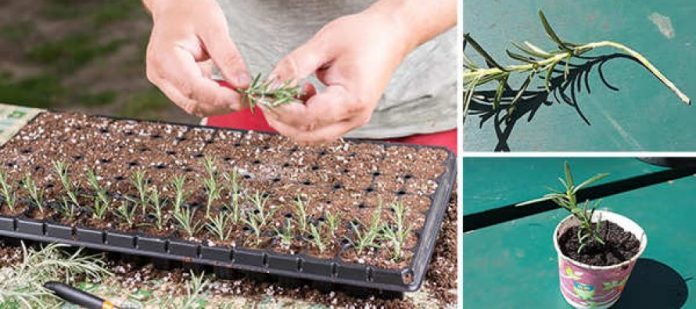Growing new plants from cuttings is a great way to increase your stock in a relatively short time. Rooted cuttings are often more robust than seedlings and mature more quickly, many of them bearing flowers and fruits much earlier than seedlings. For example, if you grow English holly from seed, it can take years to become a good shrub and bear red berries, if at all. Holly is dioecious, having separate male and female plants. After years of waiting, you may end up with a male plant that does not bear berries.
Plants from cuttings are exact clones of the mother plant. So you know exactly what you are growing, which is not the case with seed plants. This is why many gardeners prefer to grow new plants from cuttings, although they can be easily grown from seeds. You can choose from existing plants that have desirable characteristics such as good vigor, optimal size, disease resistance and good yield.
Filling your garden with cuttings can be very profitable. A single plant can give you lots of cuttings without compromising its health. If you have gardeners, you can exchange cuttings. Otherwise, you can get just one or two plants from the garden center and harvest several cuttings before you even plant them in the garden. This is the way to go if you need a large number of plants for a hedge or flower beds. You can even take a few tips from the bundles of herbs you buy on supermarket shelves.
Some plants are sterile; they do not produce viable seeds. This is the case with many natural and artificially developed hybrids. These plants can only be propagated by cuttings or by another vegetative reproduction process such as division, stratification, grafting or tissue culture.
For successful multiplication, cuttings should be taken at the right time, especially for plants that change their growth pattern according to seasonal changes. There are different types of cuttings depending on the age of the stems from which they come.
Types of cuttings
Softwood cuttings – Taken in late spring or early summer (May-June) from new shoots that have appeared that season. Soft, flexible and green stems should be kept moist with frequent fog. They take root easily and settle in the same season.
Semi-ripe cuttings – taken in summer (June – August) from lightly ripe stems this season, they may take a little longer than softwood cuttings to take root, but the heat of summer favors root growth.
Hardwood cuttings – Taken in autumn and winter on mature, woody stems, they are ready to be planted next spring. Ideally, the cuttings should be prepared as soon as the shrubs begin to lose their leaves, so that they can have enough roots before the spring sprout.
You can use different parts of the stem to grow new plants, but some plants can also multiply from leaf and root cuttings.
Bout Cuttings – A cut 6 to 8 inches long from the growing tip of the stem is taken just below a knot. Most herbs can be grown from cuttings.
Basal cuttings – A side branch is taken, cutting it as close as possible to the main stem. Most plants grow easily from basal cuttings 6 to 10 inches long.
Heel cuttings – Many shrubs require a bit of the old stem for successful rooting. The lateral branches are torn from the mother plant so as to contain part of the main stem (heel).
Stem Sections – Many cane-forming plants can be propagated by the middle sections of their long stems. Each 4-6 inch section containing a few knots can germinate roots at the bottom end and new top growth from side buds. Since the sections can be the same thickness at both ends, the bottom ends should be marked as soon as you split the stem.
Root Sections – Some plants such as sumac and California poppy are easier to grow from root cuttings than stem cuttings. Some roots can be dug up during the dormant season without harming the mother plant and divided into several sections.
Leaf cuttings – Many succulents grow new plants from whole leaves, but snake plants and begonias can grow from sections of the stem.
CLICK NEXT PAGE BELOW TO CONTINUE READING …










